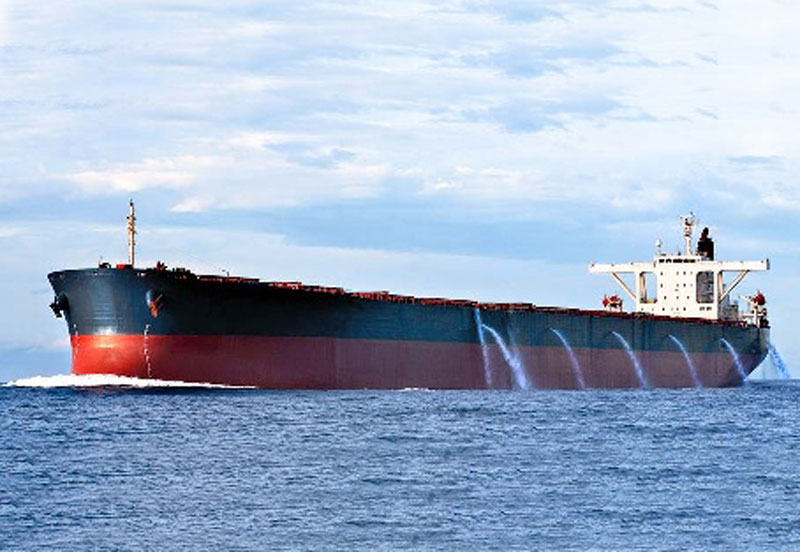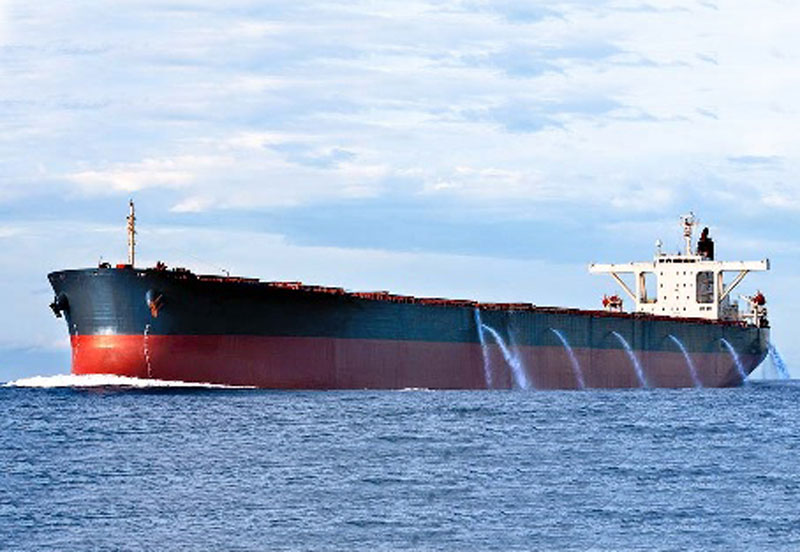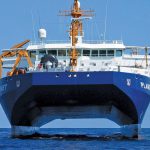Ballast water management is critically important for the reduction of the harmful effects on the marine environment which are spread due to aquatic micro-organisms transmitted from one area to another via ballasting operations of the ship. In order to manage and control the ballast operations of vessels, the International Maritime Organization (IMO) adopted a convention on 13th February, 2004. As steel-hulled vessels were introduced, ballast water has been an important factor of the ship’s stability.
Even if the ship is at the sea or not, ballast water is been carried on all seagoing vessels irrespective of how big or small the vessel is, to sustain acceptable solidity conditions. For all the types of ships, a good ballast water management plan is very important. Reduction of stresses on the vessel’s hull is done with the help of ballast water. It also provides better maneuverability with adequate vessel draft, which includes ship propeller immersion. By reducing uncontrolled vessel’s movement and vibrations, ballast water helps in improving living conditions of the crew onboard a ship. Every port state authority around the world executed their own rules and requirements for ballasting and de-ballasting operation for ships.
To ease the requirements of the control of ballast water problem, a ‘Ballast water management plan’ was initiated which was brought to be used and also implemented on board vessels which are entering international waters.
The ballast water management was introduced to provide proper guidance and assistance to the crew of the vessel and operators in the effectual operation of the ballast water exchange system. While conducting ballast water exchange plans, the particular steps and requirements are being enabled by the accomplishment of this plan. As Ballast water exchange operations are risky and dangerous than the operations of the normal port, proper and calculated planning must be carried out in advance.
To maintain and develop detailed measures and procedures related to ballast water exchange, it is the responsibility of the ship’s captain/master and the ‘Ballast Water Management Officer’ , who is generally the chief officer of the vessel concerned.
The Ballast water management plan consists of the following contents:
- Duties of the personnel on board a ship for carrying out ballast operation.
- Treatment method and sampling point must be given in the ballast water management plan.
- Location of ports providing shore discharge facility of sediments and ballast water.
- International rules and regulations for various port state controls around the world.
- Operational procedure along with the method to be used for ballasting.
- Sampling point and treatment method must be given in the ballast water management plan.
Ballast Water Management Convection
The Ballast Water Management (BWM) Convection is implied to new and existing ships which carry ballast water & are 400 GT (Gross Tonnes) and above. The BWM Convection come into operation from 8th September, 2017. Each and every ship onboard should have a valid certificate, Ballast Water Record Book and a Ballast Water Management Plan.

The convection comprises of two regulations which defines Ballast Water Management standards:
- Regulation D-1 addresses the Ballast Water Exchange standard
- Regulation D-2 provides the Ballast Water Performance standard regarding the treatment of ballast water with the help of Type Approved Ballast Water Management System.
The concerned authorities such as ship owners, scientists and flag states, are intent on the method of ballast water exchange which provides an effective means, so that the unintended transfer of these harmful marine organisms can be prevented. Obviously, this is on a temporary basis till the concerned authorities arise with a permanent solution associated to Ballast water treatment systems.
Ballast Water Exchange
In the procedure of Ballast Water exchange, the substitution of water in ship’s ballast tanks with the help of either a sequential, flow-through, dilution or other exchange methods which are suggested or made mandatory by IMO, in order to protect ecology in biologically coastal waters and alike to those in deep oceanic waters are carried out. As it has been scientifically established that those marine organisms and / or pathogens are bought on in coastal waters are unlikely to survive when extravasate into open ocean because of changes in the water’s chemistry, salinity and temperature, and likewise, those organisms taken onboard in oceanic water are very less likely to survive in coastal waters, Ballast Water Exchange (BWE) is necessary to be carried out during vessel’s voyage via different zones of the seabed.
Ballast Water Exchange Methods
D1- Exchange: Ballast water exchange is based upon the concept that the organisms and pathogens accommodated in ballast water taken on board from coastal waters are very less likely to be survive when extravasate in the deep ocean or open seas, as these waters have dissimilar temperature, chemical composition and salinity.
- Sequential method:
Throughout this process, initially the ballast water tank is emptied and then is filled up again with replacement ballast water to attain at least 95% volumetric exchange. Water in each ballast tank must be completely discharged until suction of the pumps are lost and also stripping pumps or educators must be used properly, to avoid a circumstance where organisms are left in the lowest part of the tank. The tank is then filled again with new water, while the task of emptying the tank can be completed either individually or in pairs.
- Flow through method:
The flow-through method is a procedure in which the replacement ballast water is filled via top of the ballast tank considered for the carriage of ballast water, enabling water to flow through overflow or other arrangements so to achieve at least 95% volumetric exchange of ballast water. Pumping via 3 times the volume of each ballast water tank must be taken into consideration to meet the standards of D-1.
- Dilution method:
The dilution method is a procedure in which the replacement ballast water is filled via top of the ballast tank considered for the carriage of ballast water at the same time discharge from the bottom at the same flow rate and keeping up the constant level in the tank in the whole operation of ballast water exchange.
Minimum of three times the tank volume is to be pumped via tank. Generally, two ballast pumps are used at the same time, where one is used for filling pump and other is used as a suction pump. Since it is necessary to hold the filling level in the tank’s constant, exact control of the pumped volume of both the pumps is to be confirmed.
D-2 Performance standard: This describes the performance standard for the Ballast water treatment system. The D-2 standard states the maximum amount of viable organisms let to be discharged, comprising specified indicator microbes harmful to human health:
Ships conducting Ballast water management in accordance following this regulation must discharge:
- Less than 10 viable organisms per m3>50μ in minimum dimension
- Less than 10 viable organisms per ml<50μ and >10μ in minimum dimension
- Less than the below concentrations of indicator microbes:
- Toxicogenic Vibrio cholera less than 1 colony-forming unit (cfu) per 100 ml, or less than 1 cfu per 1 gram zooplankton samples
- Escherichia coli less than 250 cfu per 100 ml
- Intestinal Enterococci less than 100 cfu per 100 ml.



Comments are closed